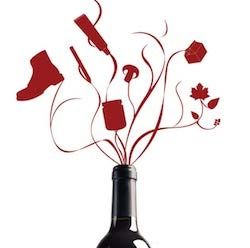In an older post (Tasting breakdown – Visual Inspection) I described how to look at the wine to look for identifying features, and now we are moving on to smell…
The aroma of food or drink greatly affects how you perceive the taste, even before you taste it. For example, have you ever noticed that when you have a stuffy nose, everything tastes blander? That’s because smell is an important part of taste! So let’s start smelling…
First off, swirl the wine in your glass, because this gives the impression that you know what you are doing. 😉 Secondly, swirling helps to oxygenate the wine and release the aromas. This is sometimes referred to as “opening up the wine”. Now that the aromas are churning, you want to stick your nose into the glass for a good whiff.
Some wines have very strong and distinct smells, while others are faint and indiscernible. The intensity of the aroma is usually judged on the following scale:
- Low
- Moderate
- Aromatic
- Powerful
Whether the aroma is powerful or not, we want to try to identify the different scents. These scents can range from fruity and floral to earthy or spicy. Some of these aromas come from the grapes themselves, but many more come from the fermentation and aging of the wine, and that’s how wine can have so many different scents.
I usually find that the fruit scents are the easiest to identify. The fruit aromas can be divided into five categories:
- Black Fruit: blackberries, plum, black cherry, currants, blueberry, fig, prune, raisin
- Red Fruit: cherry, strawberry, raspberry, pomegranate, cranberry
- Citrus: lemon, lime, orange, grapefruit
- Tree Fruit: apple, pear, peach, nectarine, apricot, persimmon, quince
- Other Fruits: melon, pineapple, mango, guava, passion-fruit, kiwi, lychee
This all sounds easy enough, but putting a name to an aroma can be difficult. Building up your odor-identification skills takes time and effort. When you are at the grocery store, take some time to smell the different fruits, herbs, and flowers; especially those that are less familiar to you. The other trick is to smell (and drink) lots of different wines, and keep track of what you smell. Compare notes with others, but don’t worry about being wrong. Each person will experience a wine differently, but they might pick something out that you wouldn’t have otherwise noticed. For my own tasting notes, I usually write down the following:
Aroma Intensity: Low/Moderate/Aromatic/Powerful Age: Youthful/Some age/ Aged Scent: Fruit, Earth, Wood, Other (flowers, spices, leather, etc)
So take a swirl, a good sniff, and enjoy!

